Rodents, though often small and unassuming, include some of the largest mammals in the world. Among them, the Capybara stands out as the largest, easily recognized by its semi-aquatic lifestyle and impressive size, which far surpasses that of its closest relatives like the beaver and nutria.
| Rodent Name | Scientific Name | Size (Length, Weight) | Habitat | Diet | Notable Features |
|---|---|---|---|---|---|
| Capybara | Hydrochoerus hydrochaeris | 106-134 cm, 35-66 kg | Wetlands, riverbanks, savannas | Grasses, aquatic plants, fruits | Largest living rodent, highly social |
| North American Beaver | Castor canadensis | 74-90 cm, 11-32 kg | Rivers, streams, lakes | Bark, twigs, leaves | Skilled dam builders, known for large incisors |
| Coypu | Myocastor coypus | 40-60 cm, 5-9 kg | Wetlands, riverbanks | Aquatic plants, roots, bark | Semi-aquatic, known as “nutria,” invasive species |
| Cape Porcupine | Hystrix africaeaustralis | 63-81 cm, 18-30 kg | Savannas, grasslands, forests | Roots, bulbs, tubers, bark | Largest porcupine species, covered in long quills |
| Bosavi Woolly Rat | Mallomys gunung | 82 cm (approx.), Weight unknown | Montane forests (Papua New Guinea) | Unknown, likely omnivorous | Discovered in 2009, exceptionally large and furry |
| Josephoartigasia | Josephoartigasia monesi | Estimated 3 m length, 1,000 kg (extinct) | Swamps, forests (South America) | Hard plant material, seeds (likely) | Largest rodent ever, lived during the Miocene epoch |
| Giant Hutia | Amblyrhiza inundata | Estimated 1 m length, up to 200 kg (extinct) | Caribbean islands | Unknown, likely herbivorous | Extinct giant rodent, possibly semi-aquatic |
| Gambian Pouched Rat | Cricetomys gambianus | 65-91 cm, 1-1.5 kg | Savannas, forests, human settlements | Fruits, vegetables, insects | Used for detecting landmines, large cheek pouches |
| Desmarest’s Hutia | Capromys pilorides | 31-60 cm, 2.8-8.5 kg | Forests, mangroves (Cuba) | Leaves, fruits, bark, small animals | Largest living hutia species, known for its agility |
| Hoary Marmot | Marmota caligata | 62-82 cm, 3.5-7.5 kg | Alpine meadows, rocky slopes (North America) | Grasses, herbs, flowers | Known for its loud whistle, hibernates in winter |
1. Capybara (Hydrochoerus Hydrochaeris)
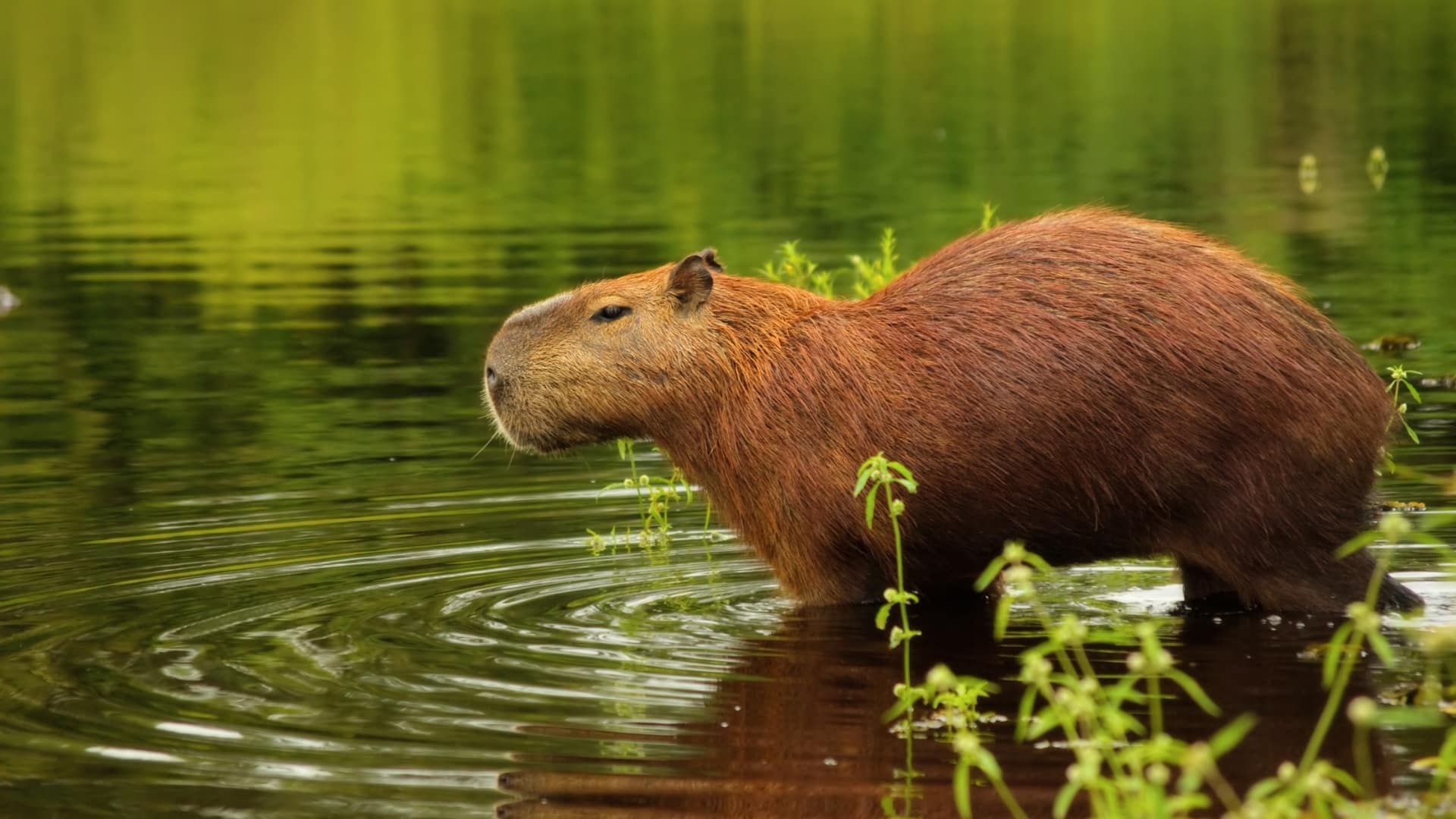
The Capybara holds the title of the largest living rodent in the world. Native to South America, particularly Brazil, Colombia, and Venezuela, these semi-aquatic mammals can reach up to 4.4 feet in length and weigh between 77 to 200 pounds.
Capybaras are social creatures, often found in groups near water bodies like rivers and lakes, where their webbed feet make them excellent swimmers. Their diet consists mainly of grasses, aquatic plants, and fruits.
Despite their size, capybaras are gentle animals, often seen grazing peacefully or lounging in the water to cool off. In some regions, they are hunted for their meat, which is considered a delicacy.
2. North American Beaver (Castor Canadensis)
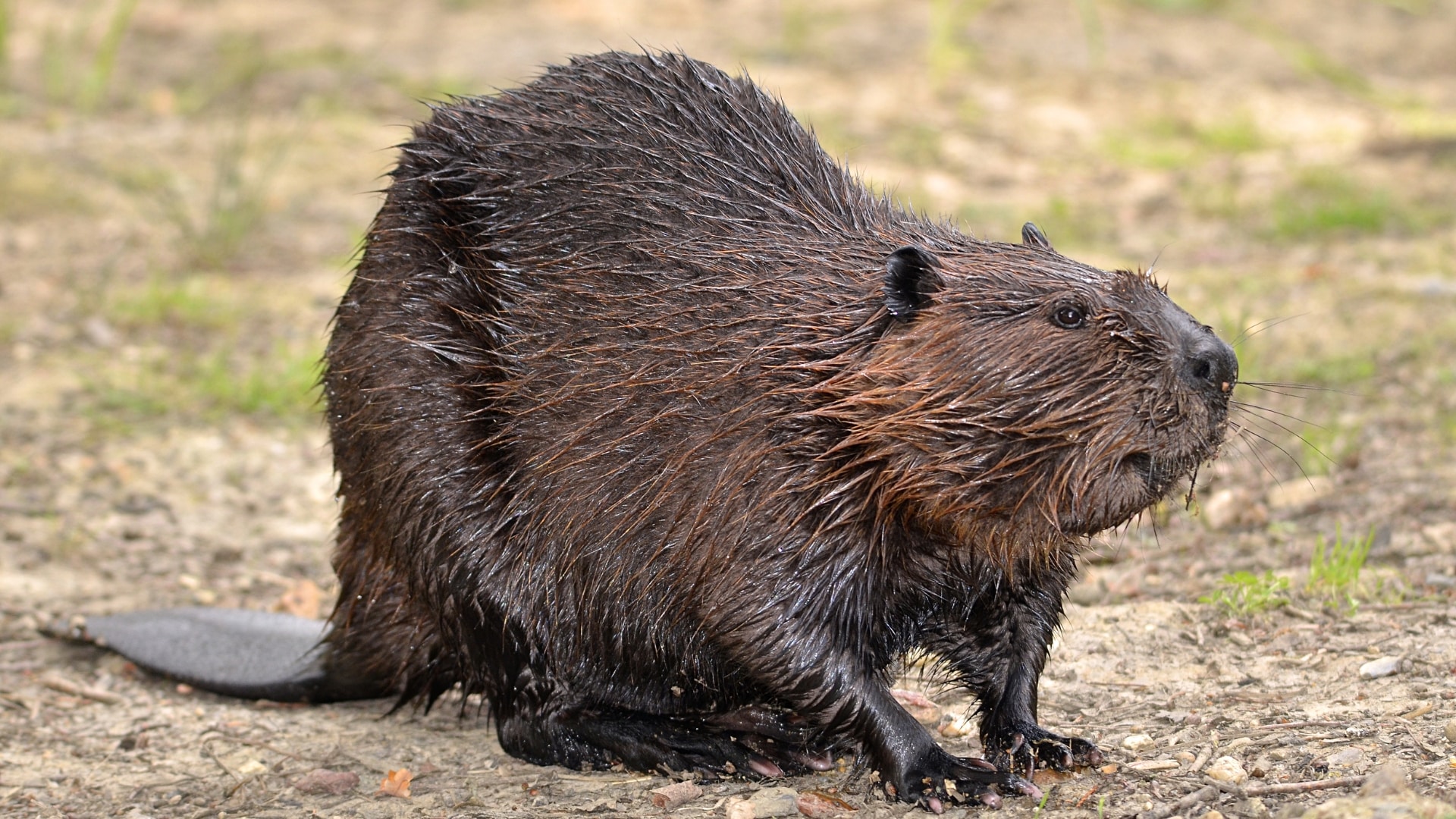
The North American Beaver is the largest rodent in North America and the second-largest in the world. These industrious creatures can weigh between 24 to 71 pounds and grow up to 3 feet in length, excluding their distinctive flat tails, which add another 14 inches.
Beavers are known for their remarkable ability to construct dams, creating wetlands that serve as habitats for various species. Their sharp incisors are strong enough to fell trees, which they use to build lodges and dams in rivers and streams. Beavers play a crucial role in their ecosystems, and their dams help in water conservation and creating diverse habitats.
3. Coypu / Nutria (Myocastor Coypus)
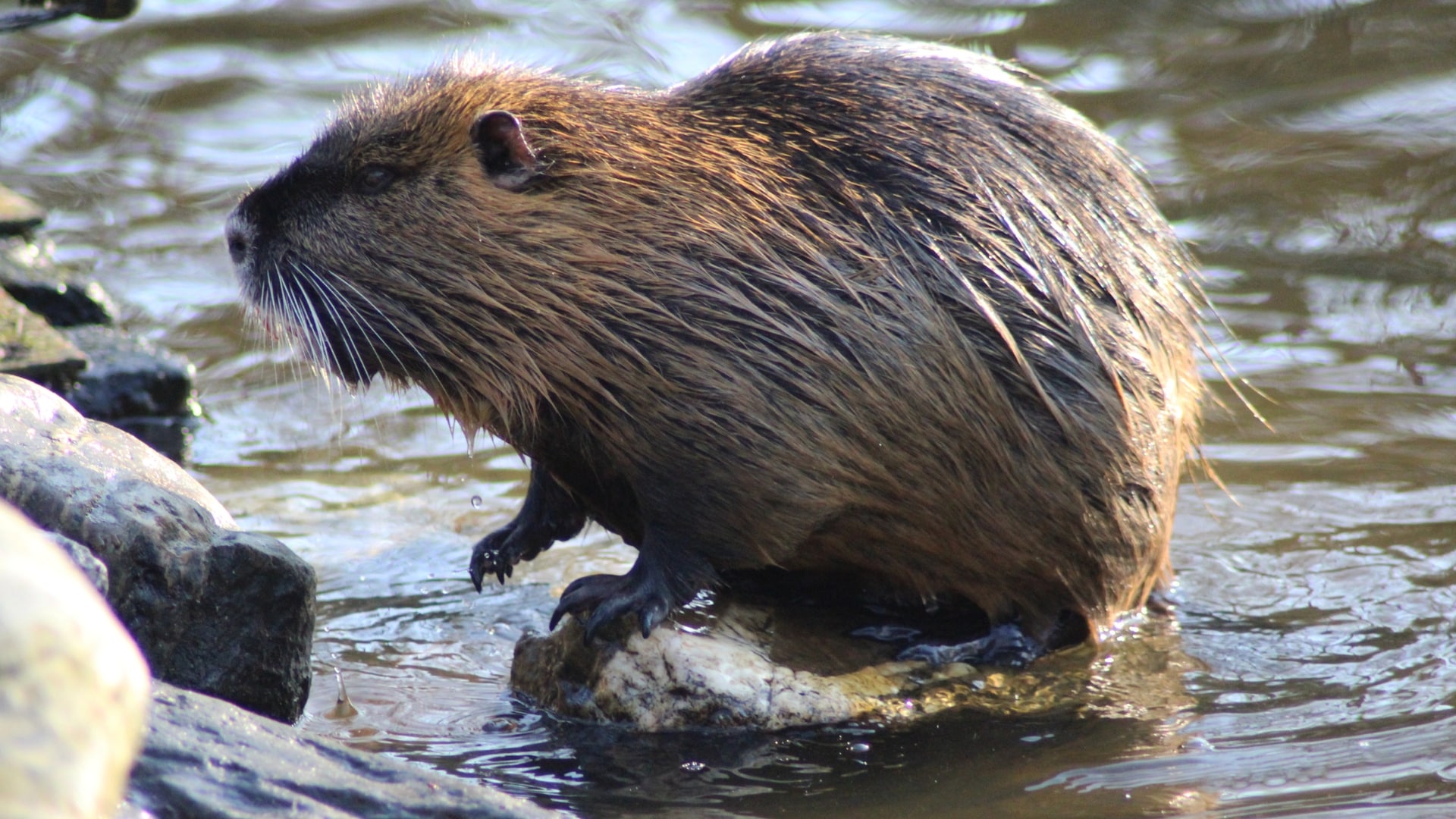
Also known as the nutria, the Coypu is a large, semi-aquatic rodent native to South America but has become invasive in other parts of the world, including North America and Europe.
Coypus can grow up to 3.5 feet in length and weigh around 37 pounds. These rodents are often mistaken for beavers due to their similar appearance, though they have slender tails more akin to those of rats.
Coypus are herbivores, feeding on aquatic vegetation, and their prolific breeding has led to them becoming pests in non-native regions, where they cause significant damage to wetland habitats.
4. Cape Porcupine (Hystrix Africaeaustralis)
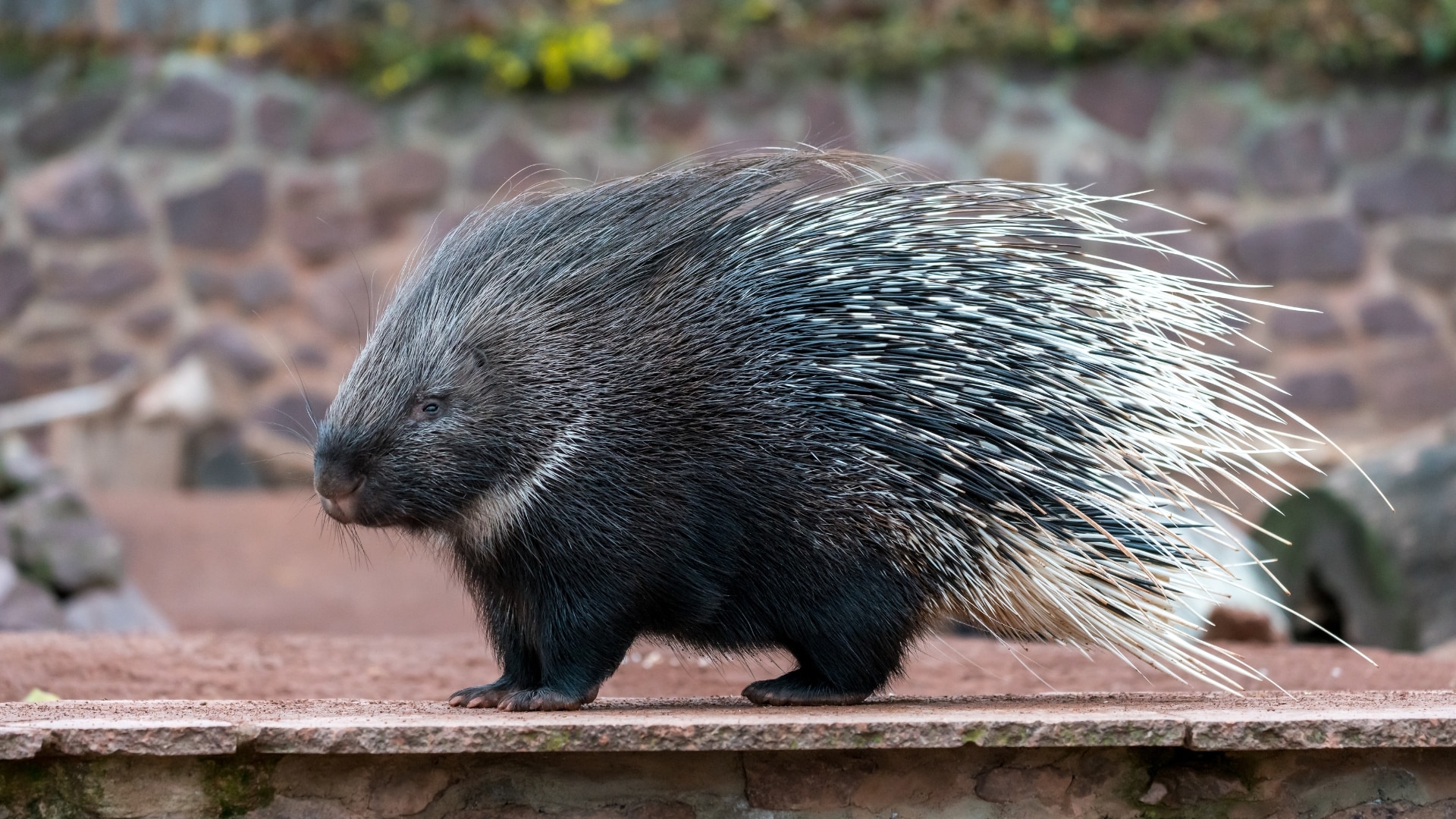
The Cape porcupine is the largest porcupine species and one of the largest rodents in Africa, weighing up to 41 pounds and growing nearly 2.7 feet long.
Native to various regions across Southern and Central Africa, including Kenya and Uganda, these rodents are known for their formidable spines, which can grow up to 20 inches long. These spines serve as an effective defense mechanism against predators.
Cape porcupines are omnivorous, feeding on a diet of roots, fruits, tubers, and bark. They typically live in pairs or small family groups and can live up to 15 years in the wild.
5. Bosavi Woolly Rat

Discovered only recently in 2009 in the Bosavi Crater of Papua New Guinea, the Bosavi woolly rat is one of the largest rats in the world, measuring up to 32 inches in length and weighing around 13 pounds. This rodent is noted for its thick, silvery-brown fur, which helps it survive in the cooler climates of its volcanic habitat.
The Bosavi woolly rat is herbivorous, feeding primarily on plants found within its secluded environment. Due to its remote habitat, it has had minimal contact with humans, and little is known about its behavior and ecology.
6. Josephoartigasia (Josephoartigasia Monesi)

Now extinct, Josephoartigasia is the largest rodent ever known, with fossils indicating that it could reach up to 10 feet in length and weigh more than 2,000 pounds. This prehistoric giant lived in South America during the Pliocene epoch, approximately 4 million years ago.
Josephoartigasia had large, powerful incisors that it likely used for defense and foraging. Its size and strength suggest it played a dominant role in its ecosystem, similar to large herbivores today. The discovery of its fossils in Uruguay has provided valuable insights into the diversity of prehistoric life in South America.
7. Giant Hutia (Ambyrhiza inundata)

The Giant Hutia, also known as Ambyrhiza inundata, was a massive rodent that lived over 100,000 years ago on the Cuba and Hispaniola islands. Fossils suggest that it was as large as a grown human, weighing between 110 to 440 pounds. This slow-moving rodent likely had few predators, as there were no competing mammals in its environment during its existence.
The Giant Hutia eventually went extinct due to changing environmental conditions, such as rising sea levels that reduced its habitat. Today, smaller descendants of the hutia still inhabit the islands, but they are much smaller, typically weighing around 5 pounds.
8. Gambian Pouched Rat (Cricetomys Gambianus)
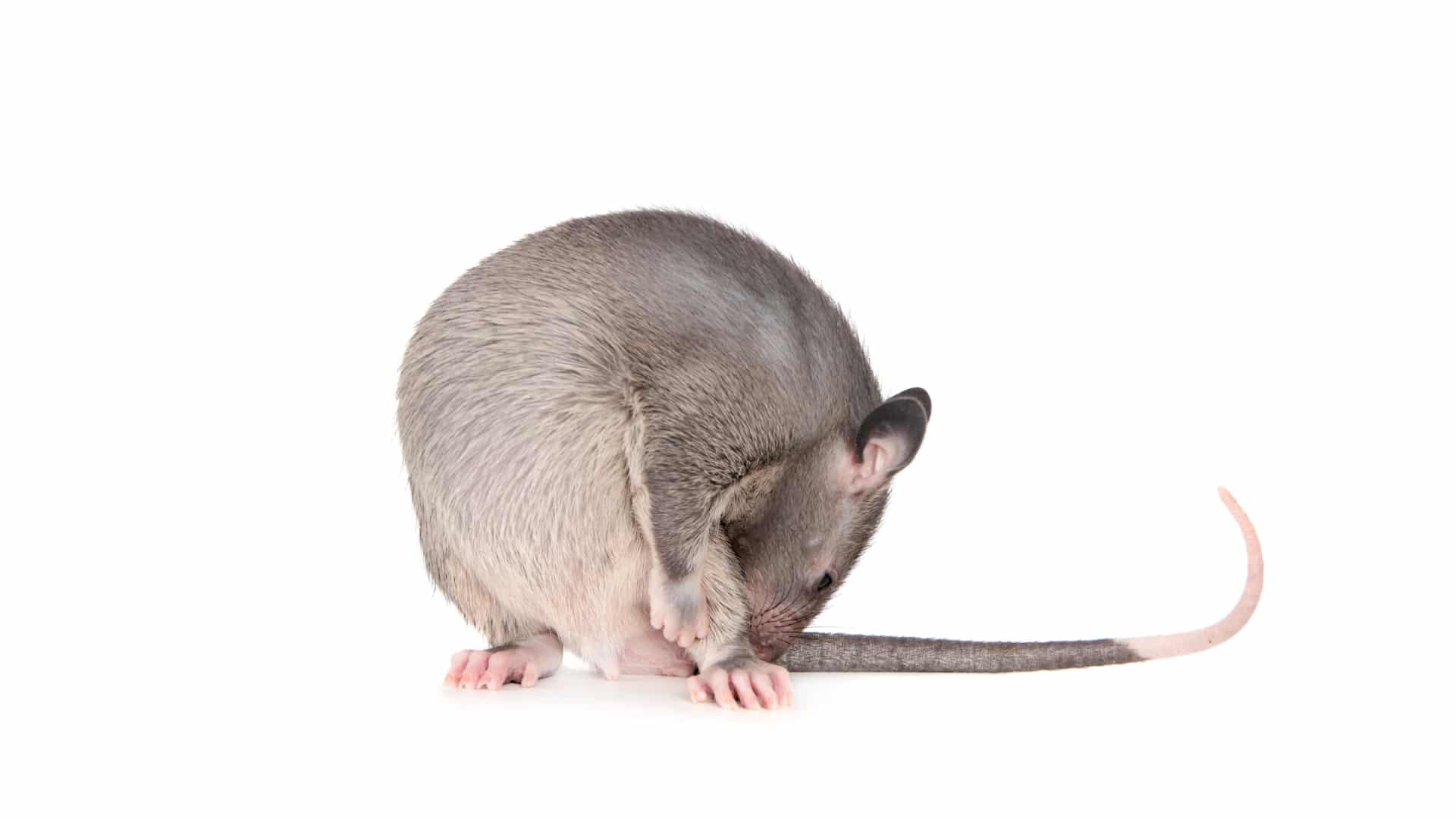
The Gambian pouched rat is one of the largest rats in the world, growing up to 3 feet in length, including its long tail. Native to Sub-Saharan Africa, this rodent is known for its large cheek pouches, which it uses to store food.
The Gambian pouched rat weighs around 1.3 kilograms and is an omnivore, feeding on a diet of plants, insects, and small animals. This rat species is also known for its sharp sense of smell, which has been utilized in some African countries to detect landmines. Despite its large size, the Gambian pouched rat is relatively solitary and nocturnal, making it a fascinating yet elusive species.
9. Desmarest’s Hutia (Capromys Pilorides)
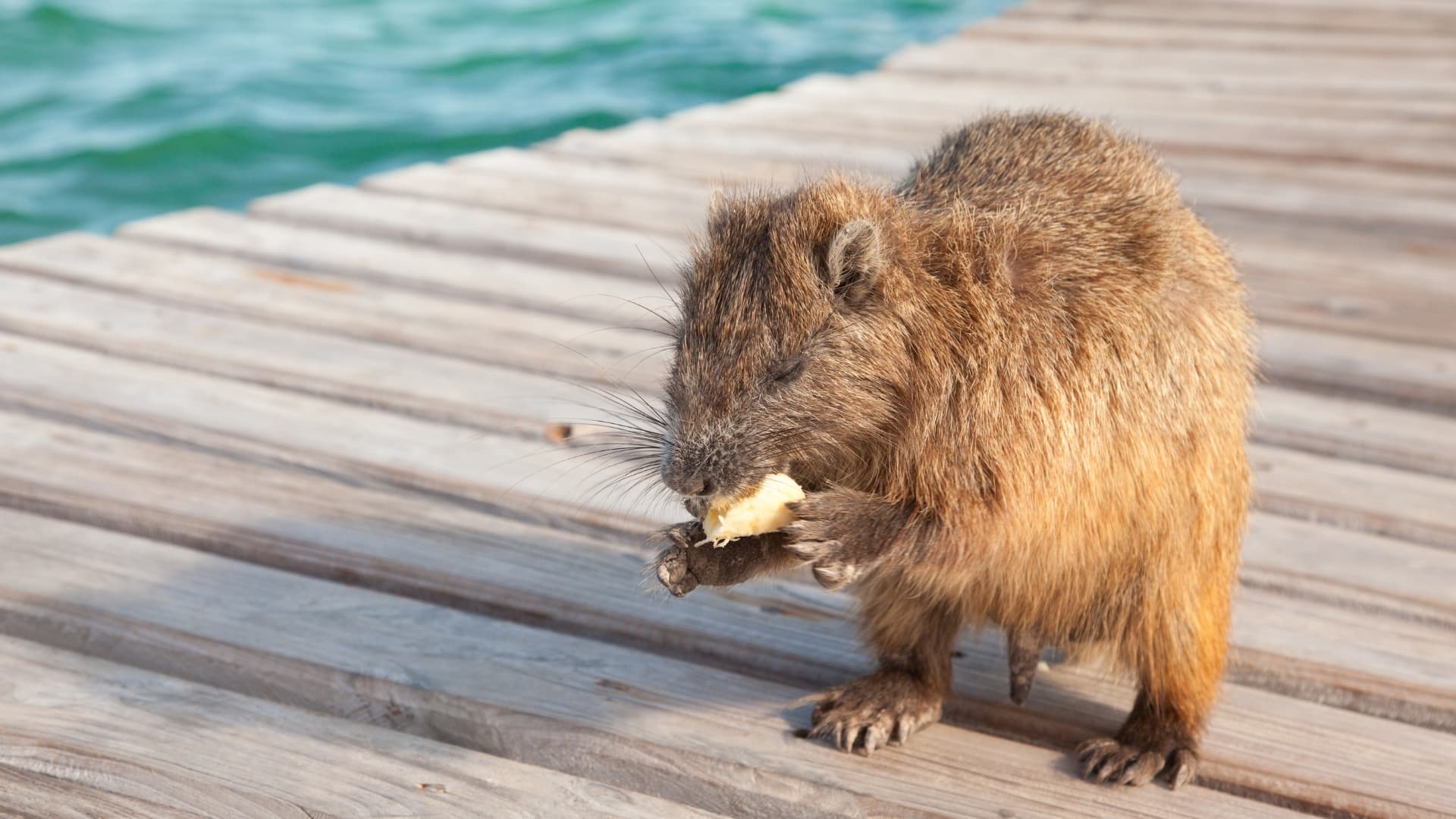
Desmarest’s Hutia, also known as the Cuban Hutia, is the largest hutia species still in existence. It is native to Cuba and can weigh up to 8.5 kilograms, with a body length ranging from 46 to 60 centimeters. This stocky rodent has coarse fur that varies in color from black to brown and even reddish hues.
Desmarest’s Hutia is an omnivore, feeding on a diet of leaves, fruits, and small animals. It is typically found in pairs or small groups, living in hollowed trees or rocky crevices. Despite being relatively common in its native range, the Cuban Hutia is an important part of the island’s ecosystem.
10. Hoary Marmot (Marmota Caligata)
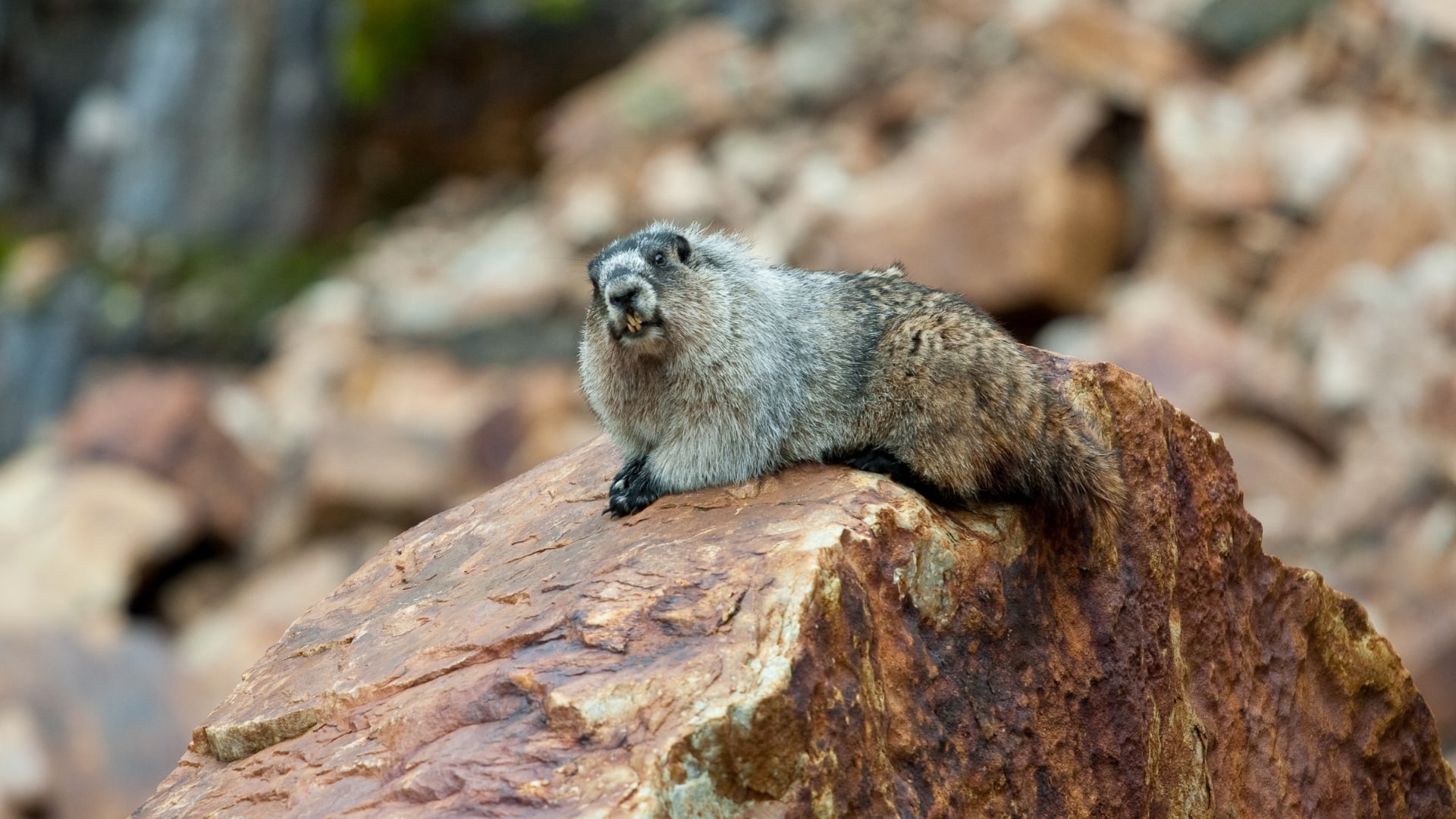
The Hoary Marmot is the largest member of the squirrel family in North America, found in Canadian Rockies and the Cascade Range. This rodent can weigh between 5 to 10 pounds and reach up to 76 centimeters in length.
The Hoary Marmot has dense fur that ranges from grayish-white to brown, with a reddish tail. These marmots are herbivores, feeding on a variety of grasses, berries, and plants. They live in colonies led by a dominant male and communicate through loud whistles to warn of predators. The Hoary Marmot hibernates for up to 8 months of the year, emerging in the spring to forage and breed.
Scientific Names and Their Meanings
| Scientific Name | Meaning |
|---|---|
| Hydrochoerus hydrochaeris | “Water pig” (Greek: hydro = water, choerus = pig) |
| Castor canadensis | “Beaver from Canada” (Latin: castor = beaver, canadensis = from Canada) |
| Myocastor coypus | “Mouse otter” (Greek: mys = mouse, castor = beaver, coypus = relating to coypu) |
| Hystrix africaeaustralis | “Porcupine of South Africa” (Greek: hystrix = porcupine, africaeaustralis = from South Africa) |
| Mallomys gunung | “Mountain rat” (local language name for “mountain” + Greek: mys = mouse) |
| Josephoartigasia monesi | Named after José Bonaparte (paleontologist) and the place of discovery (Monte Hermoso, Argentina) |
| Amblyrhiza inundata | “Blunt nose flooded” (Greek: amblys = blunt, rhiza = nose, inundata = flooded) |
| Cricetomys gambianus | “Mouse rat from Gambia” (Greek: cricetomys = mouse rat, gambianus = from Gambia) |
| Capromys pilorides | “Hairy pig” (Greek: capra = goat, mys = mouse, pilos = hair) |
| Marmota caligata | “Shod marmot” (Latin: marmota = marmot, caligatus = shod) |
A Peek into Prehistoric Giants
The capybara, the largest living rodent, is already quite large, reaching up to 4.5 feet in length and weighing around 150 pounds. However, prehistoric capybaras, known as Phugatherium and Hydrochoerus, were even more colossal. Fossil evidence suggests that these ancient giants could have been twice the size of today’s capybaras, with some estimates putting them at over 8 feet in length and weighing up to 250 pounds.
Uncovering the Fossils
Fossils of these giant rodents have been found primarily in the sedimentary layers of South American regions such as Argentina and Brazil. These remains include not only bones but also dental and skull fragments, which have been crucial in reconstructing their size and lifestyle. Paleontologists use these fossils to understand the physical characteristics and ecological roles of these ancient creatures.
What They Tell Us About Their World
Climate and Environment: The size of these prehistoric capybaras indicates that they lived in a different climate compared to today. Fossil evidence suggests that they inhabited lush, semi-aquatic environments with abundant vegetation, which supported their large size. The presence of such giant rodents implies that the prehistoric environment was rich in resources.
Evolutionary Adaptations: The increase in size over time might reflect evolutionary adaptations to environmental changes. Larger size could have been an advantage in terms of survival, allowing these rodents to better access resources and evade predators. It also hints at the possible existence of larger predators or competition in the ancient ecosystems.
Ecological Impact: Just as modern capybaras play a role in their ecosystem by influencing plant growth and serving as prey for larger predators, these ancient giants likely had a similar impact. They would have been crucial in shaping the vegetation and possibly influencing the behavior of other species in their habitat.
Other Large Rodents
In addition to the species already mentioned, several other rodents are notable for their size. The pacarana is a South American rodent that can weigh up to 25 pounds and has a distinctive, pig-like snout. The agouti is a small to medium-sized rodent found in Central and South America, known for its agility and its role in dispersing Brazil nuts. The degu is a small, Chilean rodent that is often kept as a pet due to its social nature and intelligence.
Rodent Adaptations
Rodents have evolved a variety of adaptations that have contributed to their success. Their ability to gnaw, thanks to their continuously growing incisors, allows them to access a wide range of food sources and create burrows for shelter and protection. Their efficient reproductive rates enable them to rapidly colonize new habitats and recover from population declines. Additionally, rodents exhibit a remarkable adaptability to various environments, from deserts to rainforests.
Rodent Ecology
Rodents play crucial roles in ecosystems. They are important herbivores, consuming plants and seeds, and contribute to seed dispersal by caching food. Their burrowing activities can help to aerate soil and create habitats for other organisms. However, rodents can also have negative impacts, such as damaging crops and spreading diseases.
Rodent Behavior
Rodents exhibit a wide range of social behaviors. Some are solitary, while others live in complex social groups with established hierarchies. Their mating systems vary, with some species being monogamous and others polygamous. Parental care also varies, with some species providing extensive care for their young, while others abandon their offspring shortly after birth. Rodents communicate using a variety of vocalizations, body language, and scent markings.
Conclusion
In exploring the world of rodents, we uncovered a fascinating array of species, each adapted to thrive in diverse environments, from the dense forests of South America to the remote craters of Papua New Guinea. The sheer size and unique traits of these giant rodents, such as the capybara’s aquatic grace and the beaver’s engineering prowess, challenge our perceptions of what it means to be a rodent. These creatures, both living and extinct, not only highlight the diversity of the animal kingdom but also remind us of the incredible adaptability and resilience that define the natural world.



